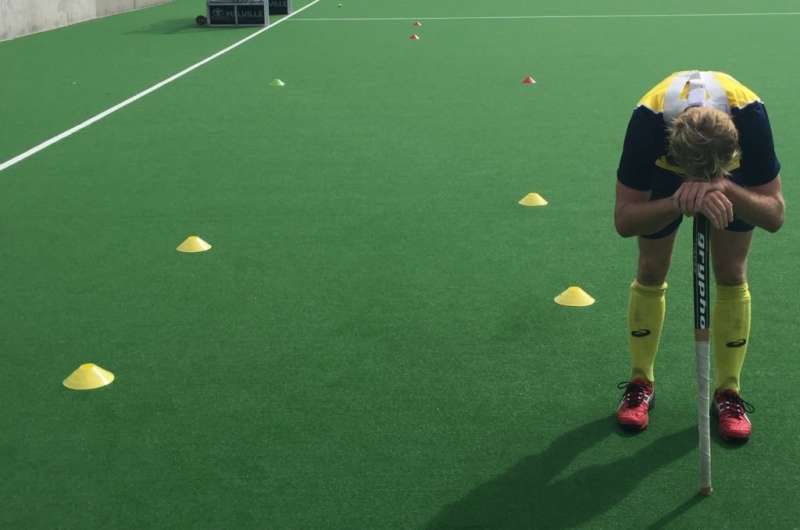Kookaburra Player exhausted after the 3-min test. Credit: Cruz Hogan
The levelling off point for maximum exertion and how long an athlete can maintain that (known as critical power) is a better measurement of effort than the total distance they cover in a match.
That's the finding from a team of sports scientists, led by former Australian Institute of Sport Senior Sports Physiologist Ted Polglaze.
With the world champion Australian men's hockey team, the Kookaburras, Ted developed a simple test to measure how hard each athlete is really working.
He hopes it will be picked up by professional sporting teams, to give better insight into when an athlete is becoming fatigued.
"The player who covers the most distance is considered to have worked the hardest, but it's not that simple," says Ted, who is now a research assistant at the University of Western Australia.
"The energy costs of continually speeding up, slowing down, and changing direction are very high, and a simple measure of total distance doesn't take this into account."
Measures of speed and distance are currently used in sports such as the AFL, soccer, and rugby.
Many players in elite professional and international team sport competitions today wear a GPS device to measure their work rate.
The test involves a three-minute, all-out shuttle-running test that replicates the demands of team sport activity. It was made by incorporating the energy demands of the typical movements made in team sports.
Provided by Freshscience























